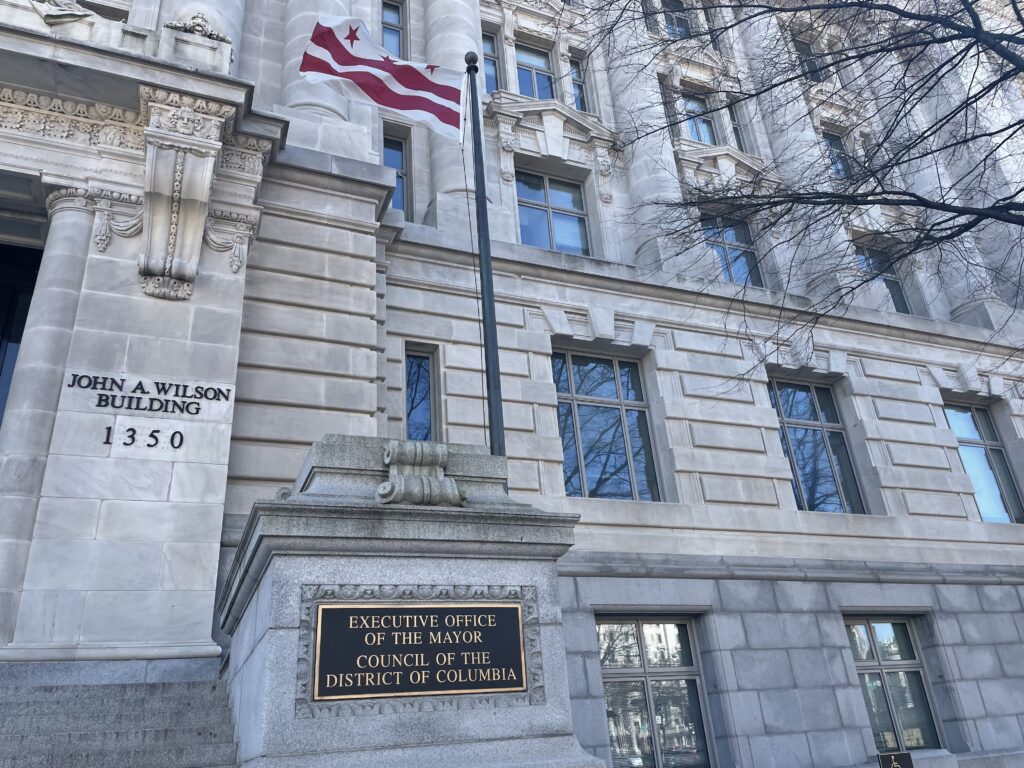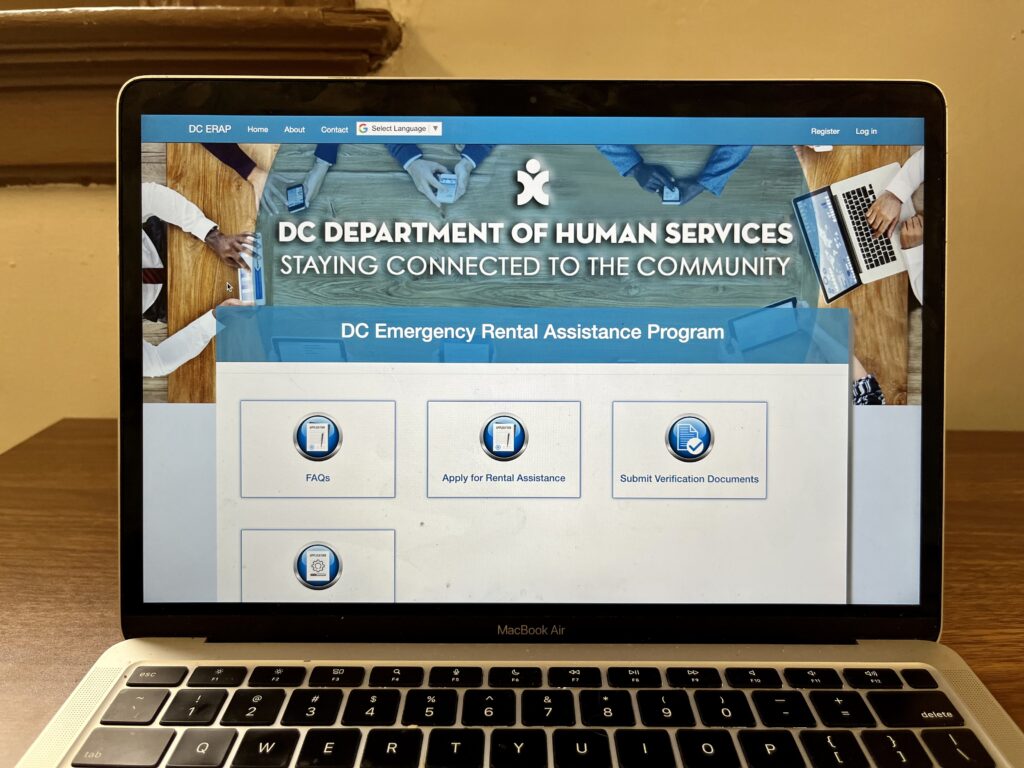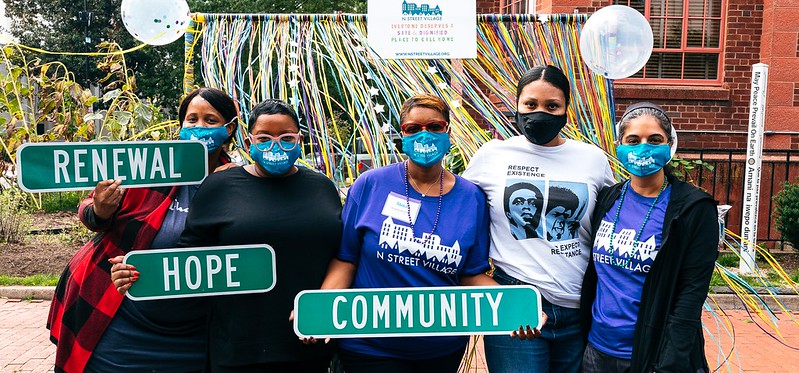Reginald Black found himself in stable housing for the first time in 2014 after nearly a decade of homelessness. Through Friendship Place, a homeless services provider based in Tenleytown, he qualified for assistance from the D.C. government to help pay his rent. But by 2016, he was back in the shelter.
“From the beginning, it wasn’t an appropriate solution,” Black said. “And I kinda knew that, but that was the only thing available to me.”
[Disclosure: Reginald Black is a Street Sense Media vendor.]
Rapid rehousing is a national model the D.C. Department of Human Services (DHS) has used since 2008. Nonprofits, like Friendship Place at the time, are contracted by DHS to implement the program, which places homeless families and individuals into houses or apartments in the D.C. area with rental assistance for up to one year. Though a share of the rent is paid by the government, residents are obligated to pay up to 60 percent of their income to the landlord. The program’s goal is to provide enough stability for residents to address issues other than housing, such as employment and health care, so that they can eventually take full responsibility for the rent.
Black was given a one-month extension to stay in his room inside a shared house longer than the initial year-long subsidy and found part-time employment working for DHS. But it wasn’t enough income for him to pay market rent in the District. He, like many other rapid rehousing customers, feels his issues with the program were rooted in a lack of “wraparound services.”
“There weren’t any viable resources to go along with the program,” he said. “No real channels to employment. It’s more like a 90-day probation than anything else.”
Rapid rehousing has come under fire from program participants several times in the past five years for allegedly not providing the necessary support to program participants to become self-sufficient. The Department of Human Services claims that 85 percent of rapid rehousing clients do not move back into homeless shelters. However, according to Amber Harding, a lawyer with the Washington Legal Clinic for the Homeless, the program has several issues that make it “the biggest driver for families re-entering shelters.”
According to a Washington City Paper report in June, 42 percent of families who left D.C.’s homeless services system but returned again for help were those who had used rapid rehousing vouchers
A Broken Ladder to Self-Sufficiency
In 2017, the Washington Legal Clinic released a report based on interviews with rapid rehousing customers in D.C. titled, “Set Up to Fail.” It identified several recurring themes based on the interviews, including a lack of protections from landlords refusing repairs and raising rent prices, and the need for better wraparound services.
The biggest issues still encountered today, according to Harding, revolve around difficulties with rent and employment.
“There’s still a time limit that is not connected to whether or not they can afford the rent,” she said. “Of course, people are going to become homeless again if that’s how it works.”
According to the report, the average rent for a rapid rehousing unit two years ago was around $1,200 per month. This was more than twice the average monthly income for families in the program, which was $500. This includes income from part-time work and from benefit programs such as Temporary Assistance for Needy Families. On top of this, Harding said, there are not enough resources to help residents find higher-paying, full-time jobs before their subsidy ends.
“The way things are now, most of the families aren’t able to earn the income needed to afford these places,” she said. “As a result, people are being dropped off the cliff back into homelessness.”
Nkechi Feaster is a prime example. Though she was working a temp job when she started the program in 2012, she knew she’d need a permanent position soon to be able to stay in her apartment. “I reached out to my case manager for help, but I never really got anything out of it,” she recalled.
Feaster started overpaying her rent while she still had money coming in. Though she was never able to find full-time employment, she was dismissed from the program because her part-time job paid her enough to maintain the rent.
[Disclosure: Nkechi Feaster is a Street Sense Media staff member.]
“By the time I was put out of the program, I only had 30 days left at my job,” she said. “There was no possible way I’d be able to pay for everything, and I was mad because no one had helped me.”
Feaster said her case manager knew she’d be out of a job soon, but the program still deemed her a success story for being able to pay for rent during her initial subsidy period, and for technically being employed once the subsidy ended. A month later, she was unemployed and expected to pay market rent for her apartment.
“[After exiting rapid rehousing] I was able to stay there for about three months,” she said. “Since then, I’ve just been renting rooms in different places with the goal of just not re-entering the shelter system.”
Even when customers are able to get employment help, it’s not always useful advice.
Ashley Rhodes, who started in the program in June of 2016, said the jobs her case managers suggested were unrealistic. “My rent is around $1,800 a month,” she explained. “They were only finding and suggesting jobs at places like Walmart and McDonald’s, even though I’ve worked at better-paying places than that before. They acted like I was being snooty, like I was above working those jobs, but I literally couldn’t do them. I wouldn’t be able to afford rent or childcare, and I’d have no benefits.”
In addition, Rhodes said the jobs that are often suggested for rapid rehousing customers put extra strain on the children, and by extension, the parents. “So many of the jobs have nighttime hours only,” she said. “If you can’t afford daycare, you have to ask friends or family to take care of your kid, and they don’t help him with his homework or watch him closely the way you would if you were there.”
Rhodes said she had a night job at one point, and quit because her son was struggling in school without her around.
When her subsidy ended in December of 2017, Rhodes appealed through the Office of Administrative Hearings, saying that she should be able to maintain her funding due to the lack of employment and education help she felt she received. “The judge ruled that Community of Hope can’t transfer me,” she said. “They still fund my place. DHS and [The Community Partnership for the Prevention of Homelessness] have told them to terminate me, but they won’t because the court order specifically says they can’t.”
DHS representative Tamitha Davis-Rama said that while she cannot speak on specific clients’ cases, DHS is committed to working with clients to extend their subsidy if needed. “[Rapid rehousing customers] are eligible to apply for a more long-term permanent housing subsidies like [permanent supportive housing],” Davis-Rama said. “And we work with our providers through that process of submitting applications for their identified customers.”
Despite this, many customers feel like improving employment services is crucial to making rapid rehousing function for them and others.
“There has to be a focus on finding jobs that people can retain and that will allow them to take over the rent after some time,” Black said of his experience. “I feel like the connections to those jobs were lacking … There should be a safety net to catch you and help you up on your feet.”
Lack of Support
While employment seemed to be the biggest issue, many tenants have had other challenges during their time in rapid rehousing. Many of these are related to landlord discrimination, Harding says. She regularly dealt with landlords who refused to rent to people in rapid rehousing, or refused to make repairs on units occupied by tenants in the program.
“We’ve also heard—and I don’t know if this has become more or less frequent—of landlords trying to raise rents for rapid rehousing tenants, which is very difficult, because once their subsidy ends, they have to pay above market rate to stay in their homes.”
DHS has attempted to combat this in the past with a “mitigation fund” established in November of 2017. The fund insures landlords for up to $5,000 for any damages incurred or unpaid rent lost to rapid rehousing tenants.
By the time she’d been in her apartment for a year, Nkechi Feaster said her landlord had stopped coming to repair anything for her.
“At one point, my refrigerator was spoiling food really fast. And I’m an insulin-dependent diabetic, so I needed it fixed,” she recalled. “I submitted a lot of requests and reminders, but it took them forever. So I was wasting money on food and risking my health.”
Feaster said by the time she left her apartment, the dishwasher, washing machine, and dryer had all stopped working and no one had responded to her requests to repair them.
While Reginald Black had no problems with his property owner, he had several issues with his case managers.
“The turnover rate is a big problem,” he said. “I had three different case managers, and I only saw the second case manager once. She never came to do a single house visit, and then suddenly I was assigned to someone else.”
Black said his case managers were not supportive whenever he went to them for solving a problem. “They would just tell me, ‘keep doing what you’re doing,’ and I would say ‘okay,’ even though what I was doing wasn’t working.”
According to Jamey Burden, an employee for rapid rehousing case management provider Community of Hope, there’s often a gap between when tenants move into their apartments and when they’re assigned a case manager, which makes it difficult for them to receive the help they need in the transition to non-shelter housing.
“One thing I think is really important is making sure once families move out of the shelter and into their apartment, that they’re provided with their rapid rehousing manager as soon as possible,” said Burden, “so that there isn’t a huge gap between when they move in and when they start to actually receive those services.”
In recent times, Burden said Community of Hope has been able to start working with clients very quickly. Despite this, he acknowledges that this hasn’t always been the case and can be a significant problem for people in rapid rehousing.
DHS began an “enhanced case management” initiative in 2016 in part to solve this problem. The development has lowered the client to case-manager ratio to a maximum of 25 to 1, allowing case managers to allot more time to each individual client.

A Starting Point, Not a Finish Line
Supporters of rapid rehousing say most criticism of the program is rooted in misunderstandings of what it is meant to do. While rapid rehousing lacks the structure to be a permanent solution for homelessness, providers maintain that this is because it was always meant to be a temporary fix.
“There is a much greater need for affordable housing that rapid rehousing, transitional housing, or any other type of homelessness program is not going to be able to fill,” Burden said. “Rapid rehousing is a good tool and a lot of communities don’t have these types of resources. I think there’s always room for improvement, but at the same time, we’re unable to take care of all the housing instability issues in D.C.”
According to the DC Fiscal Policy Institute, there are at least 40,000 households in the D.C. area that severely struggle with the cost of housing. Burden thinks it’s unrealistic to expect that rapid rehousing could solve such a large problem. He maintains that the focus should be on the program getting families out of shelters and connected to resources that will further their progress, not on whether it can alleviate every obstacle a family faces.
“We need to do the best we can as a city, but we also have to acknowledge that the homelessness assistance system is a very small piece of the much larger solution of housing affordability,” said Burden.
According to the Urban Institute, the cost of housing a family through rapid rehousing is about $880 per month. DHS stated that the FY19 budget for rapid rehousing is projected to be around $35 million, with 2,160 families currently in the program. This is compared to the $42 million dedicated to case management and client rental payments for permanent supportive housing, which currently houses 1,704 single adults and 808 families.
Ward 1 Councilmember Brianne Nadeau, who also chairs the Committee on Human Services, views rapid rehousing as a stepping stone on the path to self-sufficiency.
“One of the things that’s important to remember is that rapid rehousing is our Housing First program,” she said. “That doesn’t mean that’s where everyone is gonna end up.”
According to Nadeau, the primary purpose of rapid rehousing is to get families out of shelter and stabilized as quickly as possible. After that’s taken care of, she said, the program may conduct deeper assessments to determine what long-term issues are contributing to a customer’s situation. Addressing these problems may require a different assistance program, or moving into permanent supportive housing.
“I think the Legal Clinic is doing a really good job of highlighting cases where it just isn’t working, and I think it’s important to focus on those scenarios because that makes the program better as a whole,” Nadeau said. “But my sense is that it’s not the majority of people who are in rapid rehousing.”
Change is Coming
The Washington City Paper reported in June that 42 percent of families who left D.C.’s homeless services system but returned again for help were those who had used rapid rehousing vouchers. However, DHS continues to report that 85 percent of people housed through rapid rehousing did not re-enter shelters.
It is difficult to tell how long former rapid rehousing customers are monitored by DHS in order to receive this data. DHS representative Tamitha Davis-Rama says there is no cutoff to how long they follow up with residents.
“We don’t continue tracking families unless they present for ongoing need after they exit our program, but this is something that we’re continuously looking at,” Davis-Rama said.
She went on to say DHS has made progress in at least three of the problem areas identified by the Legal Clinic’s 2017 report. Davis-Rama cited three “major achievements” made since 2016: the rental partnership initiative, enhanced case management, and the landlord partnership fund.
The first initiative, begun in November of 2017, is meant to “streamline payment structure” by having the D.C. government pay the entirety of the rental payments for rapid rehousing units directly to the landlords. This is the department’s way of both ensuring consistent rent payments, which used to come separately from both the customer and DHS, and protecting customers from neglect or abuse.
“When there are issues where we feel like the landlord is not responding appropriately regarding maintenance repair, that’s where we as an entity can withhold rent so it’s not impacting the customers,” Davis-Rama explained.
The second development aimed to lower the client-to-case manager ratio. Davis-Rama claims that the maximum number of clients assigned to any case manager has dropped to 25. When the initiative becomes fully implemented this fall, the goal will be to lower that number to 15. DHS plans to increase efforts to make sure customers are “fully engaged with TANF employment and education providers,” which they are meant to work with as part of the program.
Lastly, the Landlord Partnership fund, which officially began in January of 2018, was created to cover any costs incurred by landlords who are housing rapid rehousing customers. If there are significant damages that a tenant’s security deposit will not cover, DHS will finance the landlord for the repairs.
Councilmember Nadeau remains hopeful DHS will continue to make progress to resolve all of the systemic struggles the Legal Clinic’s report.
“We’ve been talking to DHS about how we can get to a place where the services that people are provided as part of rapid rehousing are happening at each step,” she said. “We really can do better in a lot of areas and I think we’re getting better, but it’s incremental.”
Is there a solution?
DHS may be making efforts to improve the program, but some rapid rehousing customers fear it may not be enough.
“I think the program altogether needs to die,” said Nkechi Feaster. “The government has developed its own complacency. It will always be unsuccessful because there will never be enough wraparound services.”
Amber Harding said that while DHS has been getting more input from families, she doesn’t think they are using those insights to improve.
Instead, Harding and the Legal Clinic have urged DHS to put more emphasis on permanent affordable housing.
“The cliff still exists. The emphasis on this as a solution to homelessness still exists,” she said. “The city is not funding permanent housing at nearly the rates that they need to. On the outside, it looks like they’re taking the idea into account, but it’s not like they’re saying ‘let’s move massive amounts of money around into permanent housing subsidies and decrease rapid rehousing.’”
In the mind of Jamey Burden from Community of Hope, rapid rehousing just needs to improve its working partnership with permanent housing.
“I don’t see them as competing against each other,” he said. “In a more perfect world, we would be working better to try and integrate them. Rapid rehousing is helping people get out of shelters quickly before we move on to more permanent solutions. Ideally, it’s not a panacea. It’s only the beginning.”
Correction (07.29.2019)
In the original version of the article, the ratio of clients to DHS case managers was reported as 125:1. It is 25:1. Disclosures for two sources affiliated with Street Sense Media were added. The annual cost of the program has also been updated to reflect data provided by the Department of Human Services after publication.







